118 (→ 4 * 29½). The star Outstretched (Mebsuta, *100) was where the Gemini twins went ashore (i.e. where they rose with the Sun at the northern spring equinox), as remembered from around a quarter of 26000 ago (= the ancient ideal length estimated for the precessional cycle): ... In Hindu legend there was a mother goddess called Aditi, who had seven offspring. She is called 'Mother of the Gods'. Aditi, whose name means 'free, unbounded, infinity' was assigned in the ancient lists of constellations as the regent of the asterism Punarvasu. Punarvasu is dual in form and means 'The Doublegood Pair'. The singular form of this noun is used to refer to the star Pollux. It is not difficult to surmise that the other member of the Doublegood Pair was Castor. Then the constellation Punarvasu is quite equivalent to our Gemini, the Twins. In far antiquity (5800 B.C.) the spring equinoctial point was predicted by the heliacal rising of the Twins (see fig. 6.6). By 4700 B.C. the equinox lay squarely in Gemini (fig. 6.7). 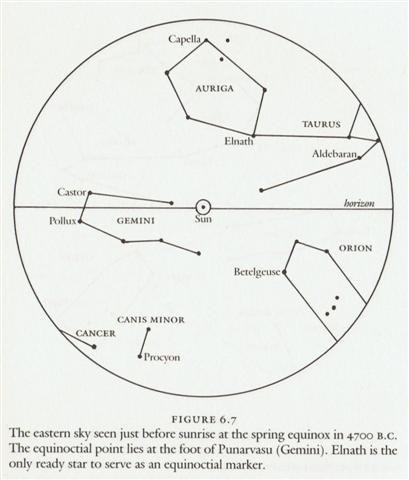 26000 * ¼ = 6500 and 6500 = 4700 BC + AD 1800. Possibly the name 'The Doublegood Pair' had influenced the place at the opposite side of the year as compared to Sirius, expressed in the star name Double Double:
In the top of the band above in this ancient Mesopotamian illustration we can see the absence of a pair of 'double teeth' → Double Double. The peculiar path of the planet Mars (↔ March) seems to visualize how time began anew around January 20 (385, *305), which was a month after the solstice and a pair of months prior to the equinox.  84 (Julian equinox) - 20 = 64 ↔ 840.- 60 = 780 (cycle of Mars) → 10 * 78 (→ Rigel, the Left Foot of Orion). ... Ogotemmêli had his own ideas about calculation. The Dogon in fact did use the decimal system, because from the beginning they had counted on their fingers, but the basis of their reckoning had been the number eight and this number recurred in what they called in French la centaine, which for them meant eighty. Eighty was the limit of reckoning, after which a new series began. Nowadays there could be ten such series, so that the European 1,000 corresponded to the Dogon 800. But Ogotemmêli believed that in the beginning men counted by eights - the number of cowries on each hand, that they had used their ten fingers to arrive at eighty, but that the number eight appeared again in order to produce 640 (8 x 10 x 8). 'Six hundred and forty', he said, 'is the end of the reckoning.' 401 (Gb6-19) - 64 = 337; Gb4-17 (229 + 108):
If the Christmas present in form of boots (to appease the far away feet of Alice) was referring to the Bootes constellation, then we ought to think: Arctururs (*215, 295 → 10 * 29½). ... From the natives of South Island [of New Zealand] White [John] heard a quaint myth which concerns the calendar and its bearing on the sweet potato crop. Whare-patari, who is credited with introducing the year of twelve months into New Zealand, had a staff with twelve notches on it. He went on a visit to some people called Rua-roa (Long pit) who were famous round about for their extensive knowledge. They inquired of Whare how many months the year had according to his reckoning. He showed them the staff with its twelve notches, one for each month. They replied: 'We are in error since we have but ten months. Are we wrong in lifting our crop of kumara (sweet potato) in the eighth month?' Whare-patari answered: 'You are wrong. Leave them until the tenth month. Know you not that there are two odd feathers in a bird's tail? Likewise there are two odd months in the year.' The grateful tribe of Rua-roa adopted Whare's advice and found the sweet potato crop greatly improved as the result ... The Maori further accounted for the twelve months by calling attention to the fact that there are twelve feathers in the tail of the huia bird and twelve in the choker or bunch of white feathers which adorns the neck of the parson bird ...
Arcturus in October 22 was a day before Khambalia (the Crooked Claw) and 3 days before the culmination of Fomalhaut in October 25. From October 25 (*218) to Christmas Eve in December 24 (*282) there should be *64 days. ... Ira, Raparenga, Uure, Nonoma, and Ringiringi got up and left the 'Dark abyss of Hau Maka' (i.e., Rano Kau), arrived at Hanga Te Pau, put the canoe into the water, and sailed off to Hiva, to Maori. Ira left on the twenty-fifth day of the month of October (Tangaroa Uri). When Ira's canoe reached the islets (off the southwestern coast), Makoi (who was staying behind) shouted the following (after him): Eight lands (are there), one has been found (or, an eighth land has been found for the first time, evaru kainga katahi i revaa), that is, Te Pito O Te Kainga. During the fast journey, one cannot find the seven lands in the midst of dim twilight. Once (Easter Island) has been lost, not even eight groups of people (i.e., countless boat crews) can find (it) again. - Ruhi to the right, Pu to the left, necklace around the neck of Hinariru at Papa O Rae! [E:86] From the evening of October 23 AD 2023, when the planet Mars would be close to Khambalia (λ Virginis, 100 Virginis), to October 29 AD 2023 when Mars would be together wíth Mercury and visible close to the Left Foot of Virgo (μ), there were 6 days:
In the next evening, in October 30 AD 2023, would be 109 Virginis together with the Girdle (Izar) of Bootes. Maybe Alice thought of her pair of feet as similar to the pair of feet in the Virgo constellation. If so, it would be natural to contemplate the similarity between a pair of new boots and the name of the the Bootes constellation (October is a rainy autumn month). Alice could have recognized herself as similar to Bootes, because the name Girdle (Izar) suggested a female, in contrast to males who instead wore belts. When the Full Moon was at Izar (ε Bootis), then the Sun should be at Bharani (41 Tauri).
... Mons Maenalus, at the feet of Boötes, was formed by Hevelius, and published in his Firmamentum Sobiescianum; this title coinciding with those of neighboring stellar groups bearing Arcadian names. It is sometimes, although incorrectly, given as Mons Menelaus, - perhaps, as Smyth suggested, after the Alexandrian astronomer referred to by Ptolemy and Plutarch. The Germans know it as the Berg Menalus; and the Italians as Menalo. Landseer has a striking representation of the Husbandsman, as he styles Boötes, with sickle and staff, standing on this constellation figure. A possible explanation of its origin may be found in what Hewitt writes in his Essays on the Ruling Races of Prehistoric Times: The Sun-god thence climbed up the mother-mountain of the Kushika race as the constellation Hercules, who is depicted in the old traditional pictorial astronomy as climbing painfully up the hill to reach the constellation of the Tortoise, now called Lyra, and thus attain the polar star Vega, which was the polar star from 10000 to 8000 B.C. May not this modern companion constellation, Mons Maenalus, be from a recollection of this early Hindu conception of our Hercules transferred to the adjacent Bootes? ... 'CURIOUSER and curiouser!' cried Alice ...
|
|||||||||||||||||||||||||||||||||||||||||||||||||||||||||||||||||||||||||||||||||||||||||||||||||||||||||||||||||||||||||||||||||||||||||||||||||||||||||||||||||||||||||||||||||||||||||||||||||||||||||||||||||||||||||||||||||||||||||||||||||||||||||||||||||||||||||||||||

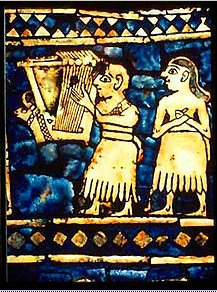














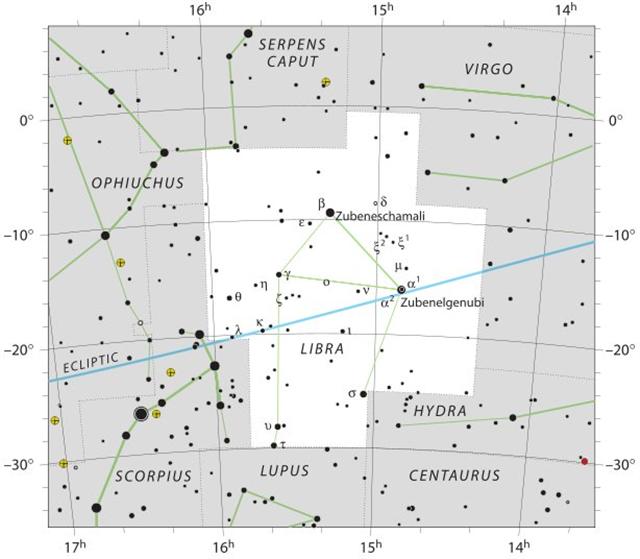
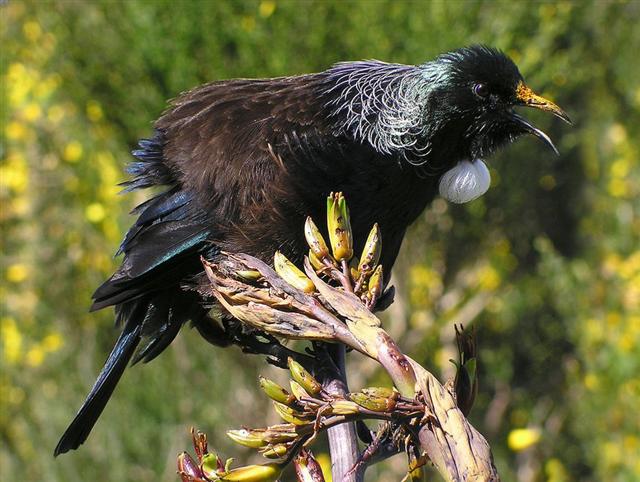
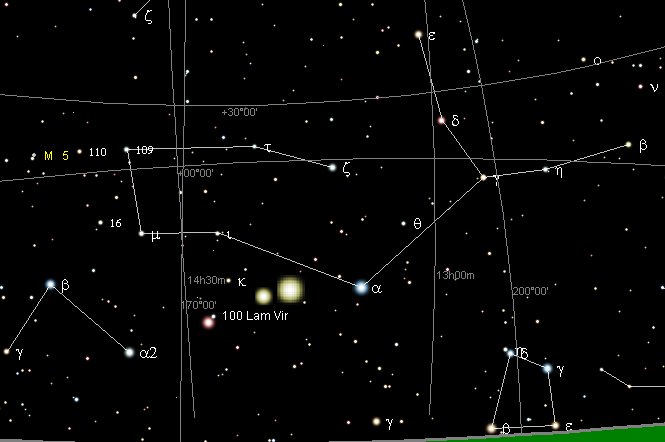
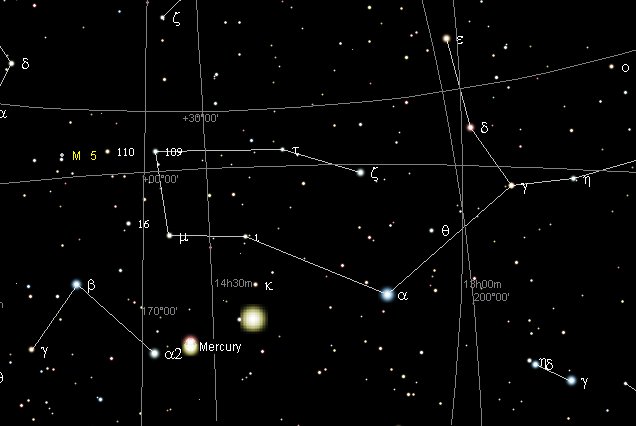
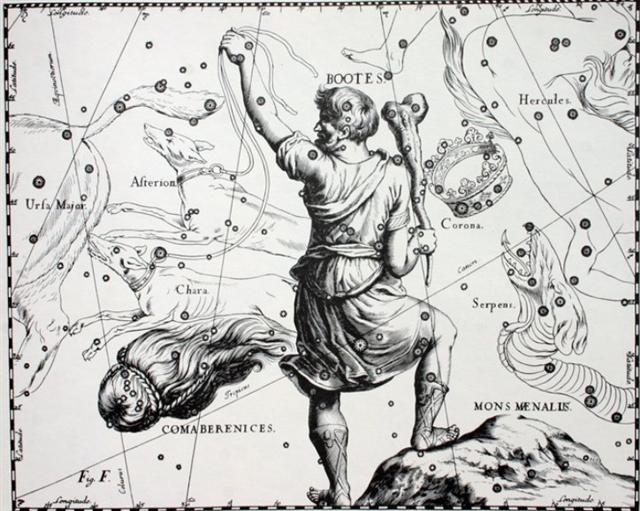
.jpg)